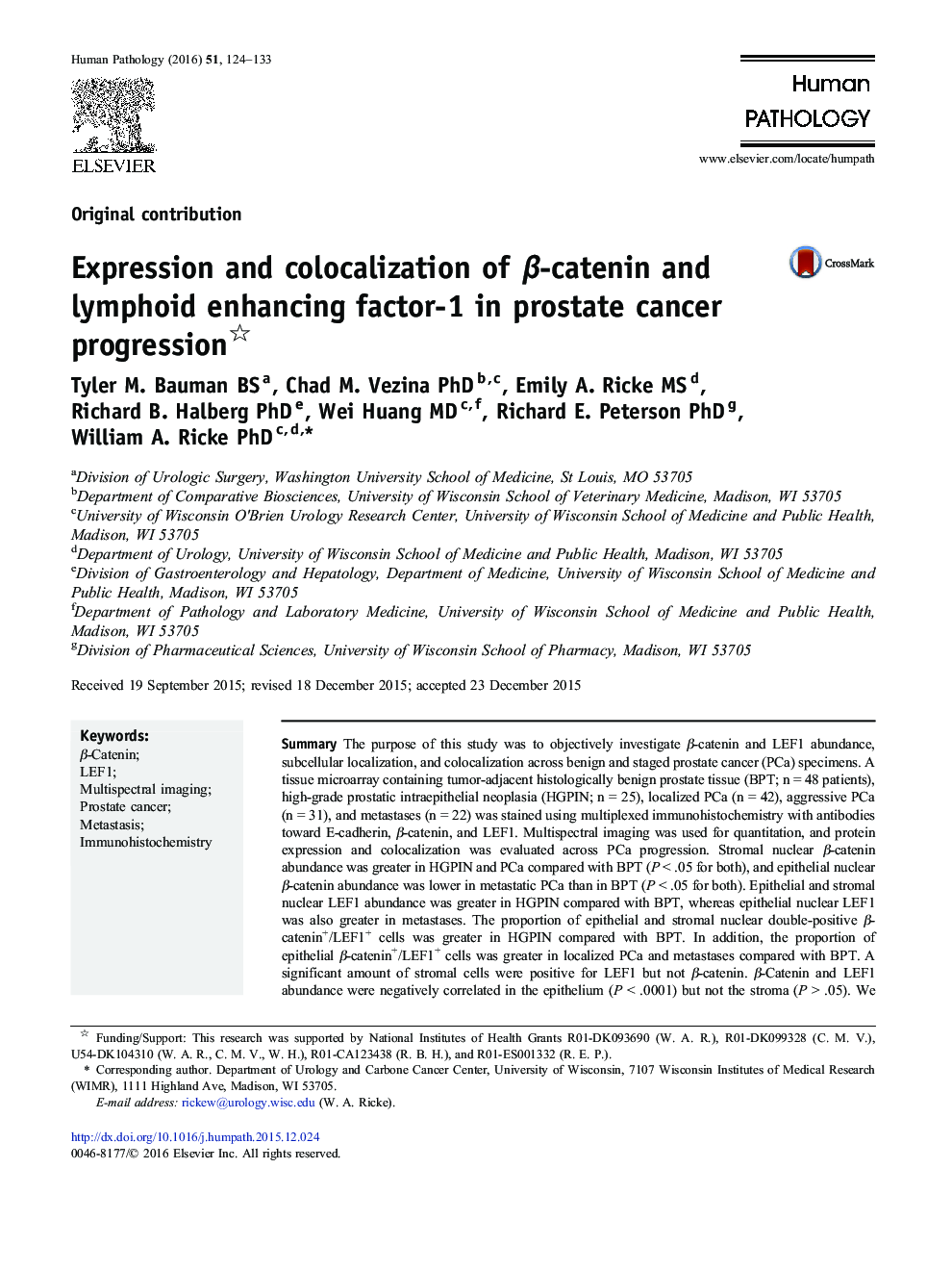| Article ID | Journal | Published Year | Pages | File Type |
|---|---|---|---|---|
| 4132441 | Human Pathology | 2016 | 10 Pages |
SummaryThe purpose of this study was to objectively investigate β-catenin and LEF1 abundance, subcellular localization, and colocalization across benign and staged prostate cancer (PCa) specimens. A tissue microarray containing tumor-adjacent histologically benign prostate tissue (BPT; n = 48 patients), high-grade prostatic intraepithelial neoplasia (HGPIN; n = 25), localized PCa (n = 42), aggressive PCa (n = 31), and metastases (n = 22) was stained using multiplexed immunohistochemistry with antibodies toward E-cadherin, β-catenin, and LEF1. Multispectral imaging was used for quantitation, and protein expression and colocalization was evaluated across PCa progression. Stromal nuclear β-catenin abundance was greater in HGPIN and PCa compared with BPT (P < .05 for both), and epithelial nuclear β-catenin abundance was lower in metastatic PCa than in BPT (P < .05 for both). Epithelial and stromal nuclear LEF1 abundance was greater in HGPIN compared with BPT, whereas epithelial nuclear LEF1 was also greater in metastases. The proportion of epithelial and stromal nuclear double-positive β-catenin+/LEF1+ cells was greater in HGPIN compared with BPT. In addition, the proportion of epithelial β-catenin+/LEF1+ cells was greater in localized PCa and metastases compared with BPT. A significant amount of stromal cells were positive for LEF1 but not β-catenin. β-Catenin and LEF1 abundance were negatively correlated in the epithelium (P < .0001) but not the stroma (P > .05). We conclude that β-catenin and LEF1 colocalization is increased in HGPIN and metastasis relative to BPT, suggesting a role for β-catenin/LEF1–mediated transcription in both malignant transformation and metastasis of PCa. Furthermore, our results suggest that LEF1 abundance alone is not a reliable readout for β-catenin activity in prostate tissues.
